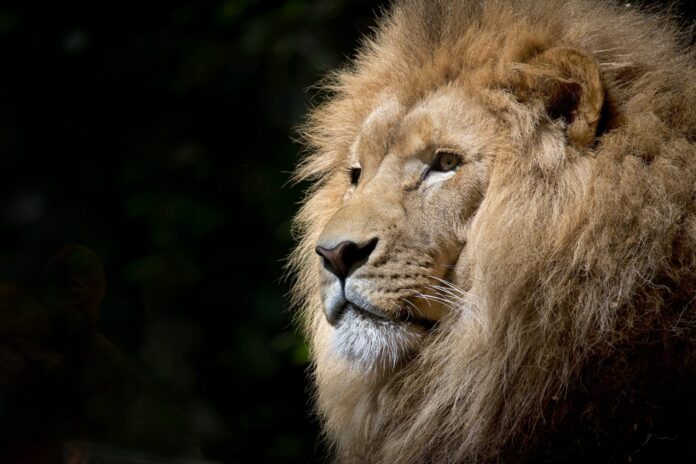
In the world of animation and motion graphics, understanding the difference between kinematics and dynamic animation is crucial. Both terms are often used interchangeably, but they refer to distinct aspects of the animation process. In this article, we will delve into the dissimilarities between kinematics and dynamic animation, shedding light on their unique characteristics and applications. By the end, you will have a clear understanding of these concepts and their significance in the world of animation.

Kinematics: The Basics
Kinematics, in the context of animation, refers to the study of motion without considering the forces that cause it. It focuses on the mathematical representation and analysis of motion, allowing animators to create realistic movements in their designs. Kinematics deals with parameters such as position, velocity, and acceleration, providing a framework for animators to define how objects move in a given space.
The Three Components of Kinematics
- Position: Position is the location of an object in a particular frame of reference. It is described using coordinates such as x, y, and z. By manipulating an object’s position over time, animators can create the illusion of movement.
- Velocity: Velocity describes the rate at which an object changes its position. It is a vector quantity that includes both magnitude and direction. Animators can control the speed and direction of an object by adjusting its velocity.
- Acceleration: Acceleration measures the rate at which an object’s velocity changes over time. It indicates how quickly an object can change its speed or direction. By modifying an object’s acceleration, animators can create smooth or abrupt changes in its movement.
Applications of Kinematics in Animation
Kinematics plays a fundamental role in various animation techniques, including traditional hand-drawn animation, computer-generated imagery (CGI), and 3D animation. By understanding the principles of kinematics, animators can bring characters and objects to life with lifelike and believable movements. Kinematics provides the foundation for rigging, inverse kinematics, and other animation techniques that enhance the realism and expressiveness of animated creations.
Dynamic Animation: Going Beyond Kinematics
While kinematics focuses on motion and its mathematical representation, dynamic animation takes the animation process a step further by incorporating the forces and interactions that drive motion. Dynamic animation considers the physical properties of objects, such as mass, gravity, and collisions, to create more realistic and dynamic animations.
Simulating Real-World Physics
Dynamic animation aims to simulate real-world physics and the behavior of objects in motion. By accurately representing physical forces and interactions, animators can create animations that mimic the natural movements of objects. This approach adds an additional layer of realism and complexity to animated scenes.
Key Elements of Dynamic Animation
- Mass: Mass refers to the amount of matter present in an object. In dynamic animation, objects with different masses exhibit distinct responses to external forces. Heavier objects require more force to move or change direction compared to lighter objects.
- Gravity: Gravity is a fundamental force that attracts objects towards each other. It gives objects weight and causes them to fall towards the ground. Animators can incorporate gravity into their dynamic animations to simulate realistic movements and interactions with the environment.
- Collisions: Collisions occur when objects interact and exert forces on each other. In dynamic animation, collisions play a crucial role in determining how objects bounce, deform, or interact with their surroundings. By accurately modeling collisions, animators can create realistic and visually compelling animations.
Applications of Dynamic Animation in Animation Industry
Dynamic animation finds wide application in various domains, such as film and television, video games, and simulations. It enables animators to create realistic simulations of physical phenomena, such as fluid dynamics, cloth simulation, and rigid body dynamics. Dynamic animation is particularly useful when animating scenes involving characters, objects, or environments that require natural and responsive movements.
FAQs (Frequently Asked Questions)
Q: What are the main differences between kinematics and dynamic animation?
Kinematics focuses on the mathematical representation of motion without considering the forces behind it, while dynamic animation incorporates physical forces and interactions to create realistic and dynamic movements.
Q: Can kinematics and dynamic animation be used together?
Absolutely! Kinematics provides the foundation for creating motion, while dynamic animation adds realism and complexity to the movements. By combining both approaches, animators can achieve highly realistic and visually appealing animations.
Q: Which animation technique relies heavily on kinematics?
Inverse kinematics (IK) is an animation technique that heavily relies on kinematics. It allows animators to control the motion of character limbs by manipulating the position and orientation of their end effectors.
Q: Are there any software tools that specialize in kinematics and dynamic animation?
Yes, several animation software tools offer features and functionalities specifically designed for kinematics and dynamic animation. Some popular examples include Autodesk Maya, Blender, and Cinema 4D.
Q: How important is understanding kinematics and dynamic animation for aspiring animators?
Understanding the principles of kinematics and dynamic animation is crucial for aspiring animators. It provides a solid foundation for creating realistic movements and enhances the quality and believability of their animations.
Q: Can you provide an example of an animation that combines kinematics and dynamic animation?
Imagine an animated character walking on uneven terrain. Kinematics would be used to determine the position and motion of each limb, while dynamic animation would consider the character’s weight, gravity, and the interaction between the feet and the ground.
Conclusion
In conclusion, kinematics and dynamic animation are two essential aspects of the animation process. While kinematics focuses on motion and its mathematical representation, dynamic animation adds the forces and interactions that drive realistic movements. Understanding the differences between these two concepts is vital for animators seeking to create visually appealing and lifelike animations. By harnessing the power of kinematics and dynamic animation, animators can bring their creative visions to life and captivate audiences with immersive animated experiences.
Thank you for visiting Animaders! If you enjoyed this content, please consider liking and subscribing to our website for more amazing content. Your support helps us create even more great content and keep Animaders growing. Thanks again!



